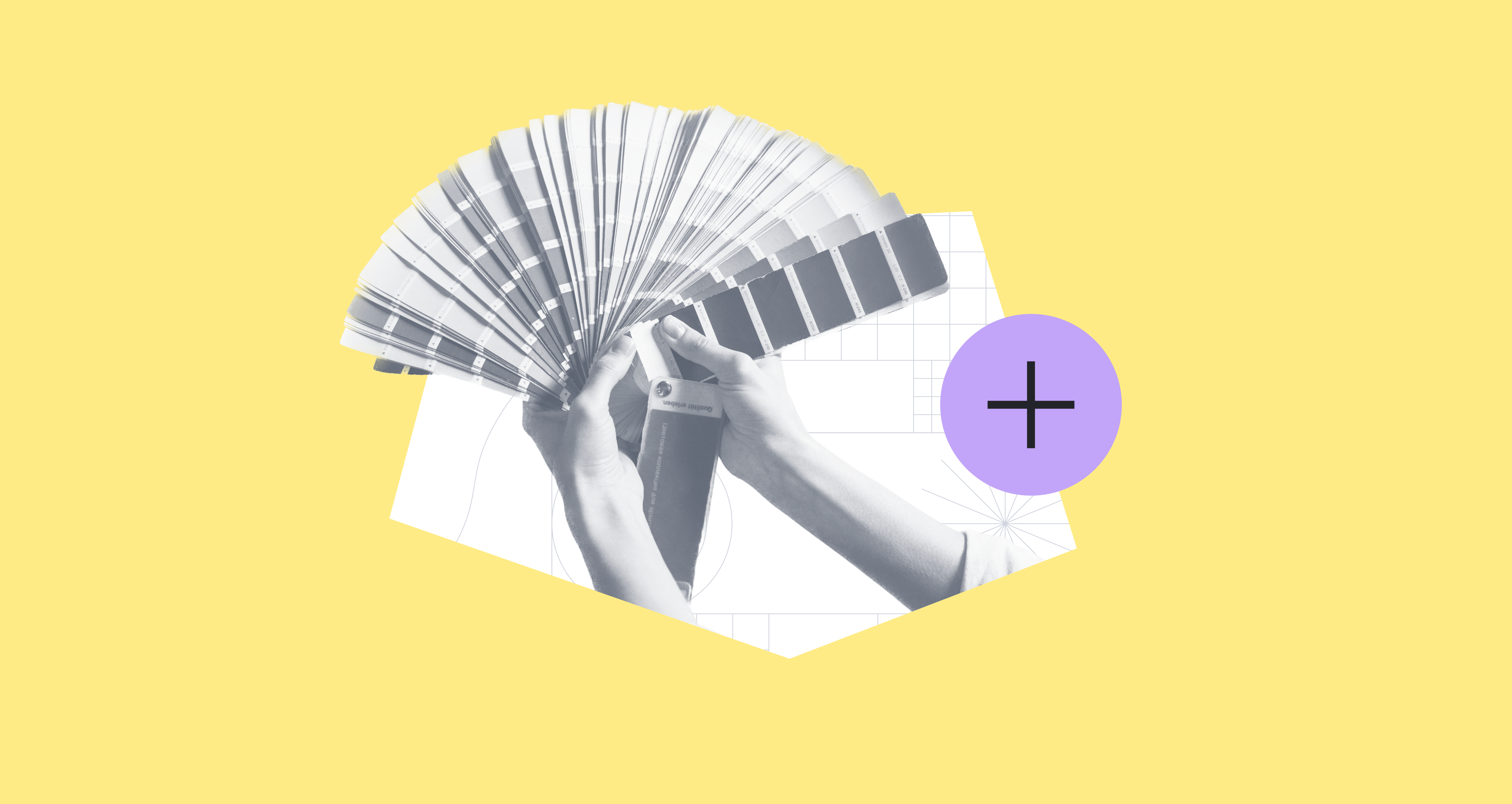We love using design tokens to minimize repetitive tasks, ensure consistency, and ultimately free up time for more creativity. So we’re very excited about Variables—a new feature that supports the implementation of design tokens in Figma! This game-changing tool allows users to take a more systematic approach to scaling and maintaining their design systems.
Read on to explore how to design tokens work and how to leverage the powerful potential of Variables in Figma.
How Do Design Tokens Work?
Design tokens are a collection of predefined values for elements like colors, typography, and spacing. They’re stored in a platform-agnostic format, but can be transformed using platform-specific tools such as Variables in Figma.
Crucially, design tokens should be shared across your design and development teams. The goal is to treat them as a unified source of truth. Any changes to design tokens need to be made in one central place and should update the entire design system.
Using Design Tokens For Better Consistency and Efficiency
Before design tokens came along, designers had to manually input values for colors, fonts, and other design elements. This could happen hundreds of times over the course of a project. It took up valuable time and increased the risk of human error.
One of the key benefits of using design tokens is the automation they bring to the design process. Designers can create a set of variables for color, typography, spacing, and more, and then simply plug them into their designs. What’s more, you can make a change once and it’ll instantly propagate throughout your project. This saves you hours of tedious manual adjustments, ensures the integrity of your design, and can even reduce time spent on quality assurance.
The Benefits of Leveraging Variables in Figma
Variables in Figma can be used to define a set of values for your design elements, including variations on these values. This allows for dynamic changes within the same design element, helping you accelerate the design process and create complex prototyping flows.
For example, let’s say you want to design primary, secondary, and tertiary buttons. You can use variables to define consistent attributes—such as spacing and font style—as well as several colour variations. With a simple toggle, you can switch between different button styles without any additional manual adjustments!
Similarly, you can get spacing to update immediately for different devices, or quickly preview the flow of text in various languages.
When you make changes to a Variable, you can ensure that the update is applied uniformly across your entire design project. This is a game-changer for projects with extensive design systems, as it minimizes the need to hunt down and adjust each design element individually.
The Variables feature also enhances Figma’s collaborative advantages. Teams can access and modify the same Variables, ensuring that everyone is on the same page when it comes to design consistency. This is particularly valuable for larger projects and cross-functional teams.
When it comes to prototyping, the possibilities are endless. Variables empowers you to do everything from creating a fully functional checkout cart to building an interactive quiz that uses conditional logic.
Here’s a fun example of what’s possible: a playable version of Flappy Bird built with Figma Variables! This whimsical game uses 46 variables and features scoring, physics-based movement, collision logic, and pseudo-random pipe placement.
A Quick Guide to Using Variables in Figma
First, you’ll need to create a Collection. This serves as a container for variables. Make sure to give your Collection a concise but descriptive name.
Next, you’ll define Categories within your Collection. This involves organizing variables into a hierarchical structure according to their specific needs, making it easier to find and use variables effectively.
Now you can create your variables. Currently, Figma allows you to choose between four properties:
- Color – for colour fills.
- Number – for things like dimensions, padding, margins, and corner radius.
- String – for reusing common text strings such as titles.
- Boolean – allows you to toggle a True/False state for elements such as layer visibility. This is particularly useful for responsive design implementation.
Upcoming Improvements to Variables
Variables is currently in open beta. It’ll continue to improve and evolve in the coming months. Here’s what Figma is planning to add:
- Typography variable type. This will provide a way to switch between combinations of typography properties, such as font families, sizes, and spacing.
- Support for additional properties. You’ll soon be able to apply variables to additional property fields such as stroke width, effect colors, layer opacities, and more. Figma is also working to support additional component property types (currently you can only assign variables to variant properties.)
- Extended collections (enterprise-only feature). Figma is exploring ways to handle theming for sub-brands, which are often managed by different teams in large organizations. Users will be able to add brand-specific overrides to an existing variable collection and publish those overrides as additional modes. We’re expecting this to be a highly valuable feature for higher education institutions, government agencies, and so on.
The integration of Variables in Figma is revolutionizing the way we approach design systems. Teams can leverage this powerful tool feature to streamline their workflows and automate changes, ensuring consistency and freeing up valuable time. If you haven't already, dive into the world of design tokens and Figma Variables to map your way to a more efficient, collaborative, and creative design process!

